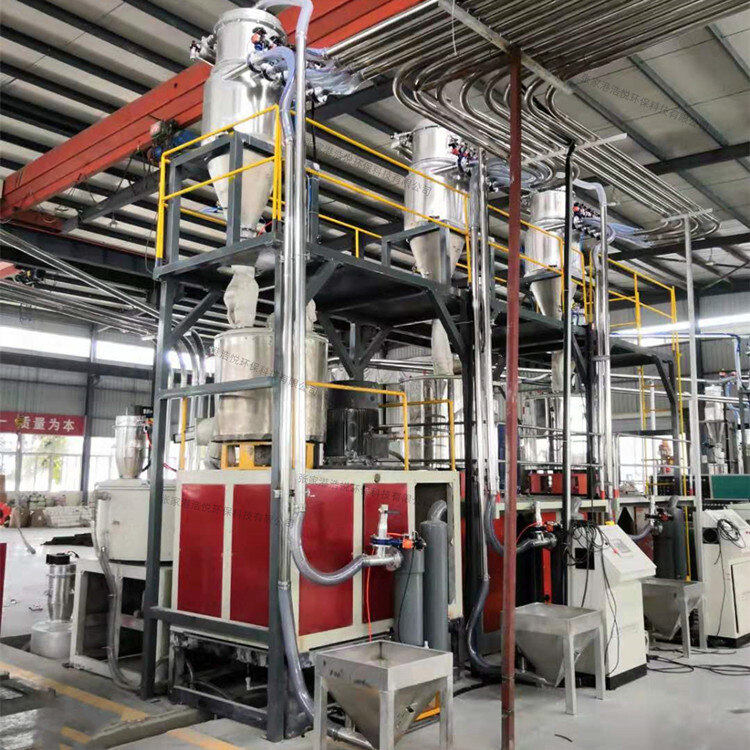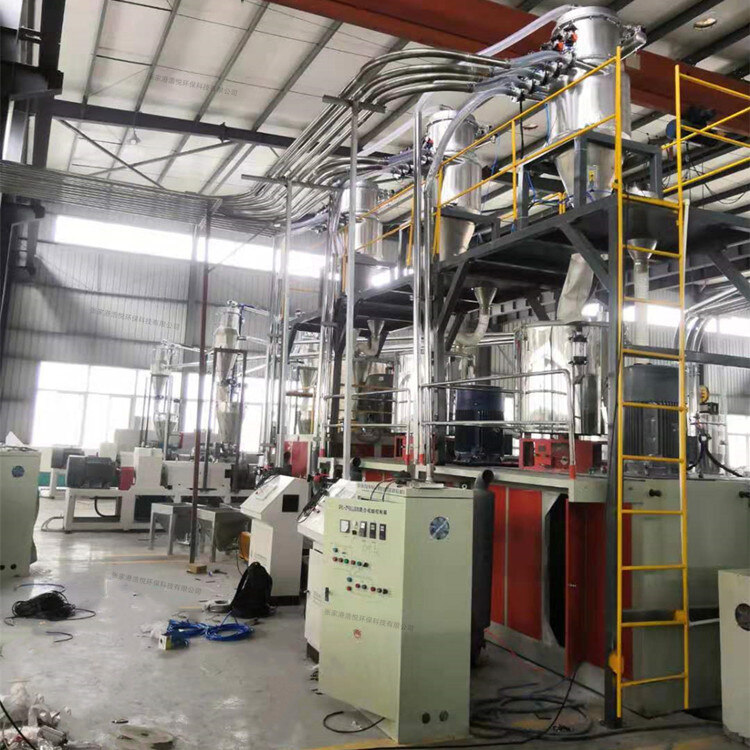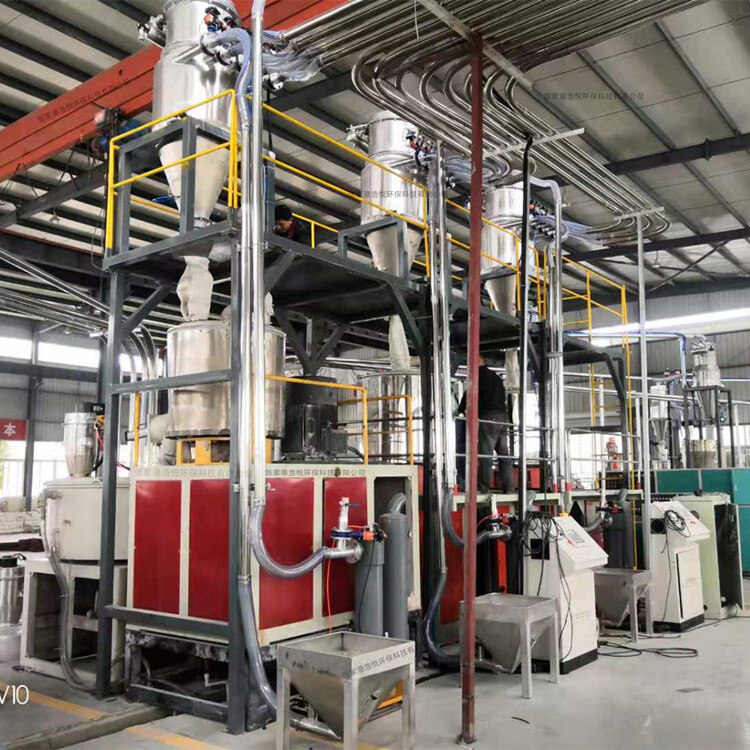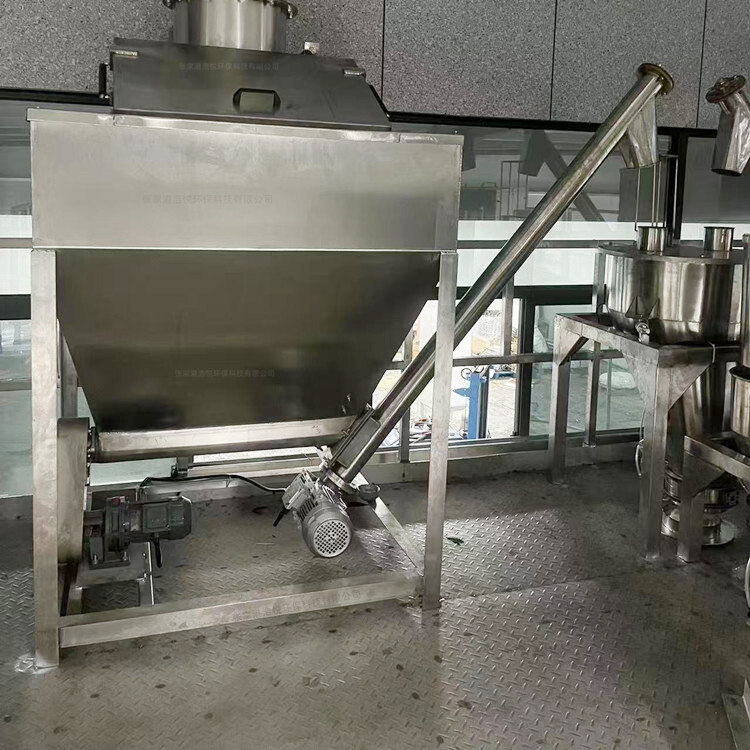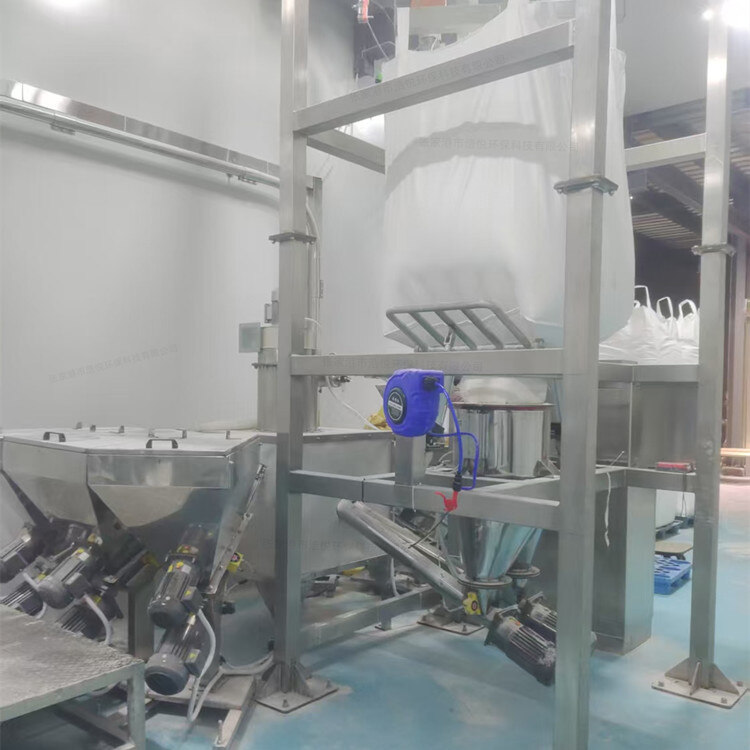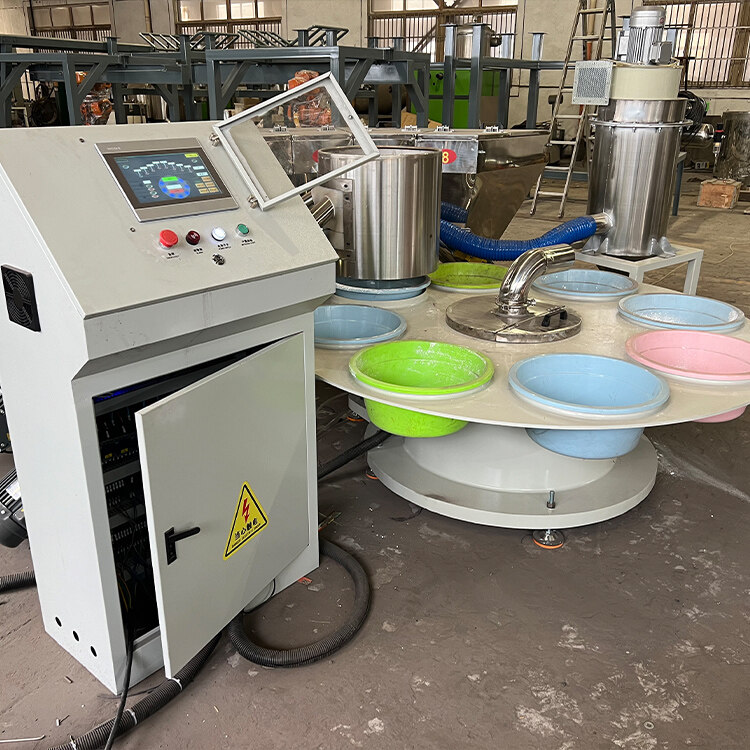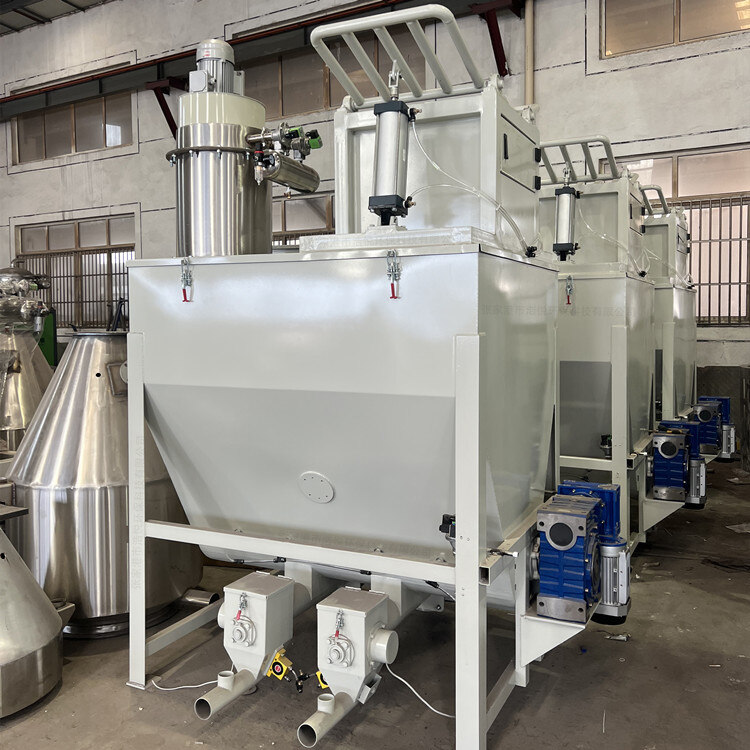- Introduction to automatic batching machine and fully automatic batching machine equipment
- The powder metering system tells you about the introduction of the mixing and drying machine
- 1000kg vacuum feeding machine
- Fully automatic small material batching system
- Research on Innovation of Automatic Weighing Machine Technology
- Design and operation of automatic batching system using PLC, industrial computer and frequency converter
Automatic metering and conveying system
- Category:Automatic metering and conveying equipment
- Hits:102次
- Release Date:2025-06-23
- Share:
- Inquiry
- Details
1、 Core functions and technological advantages
High precision measurement
The system can choose various measurement methods such as volumetric and weighing based on the characteristics of different materials and production needs. Volumetric metering utilizes components such as screws and scrapers to transport materials in a fixed volume, making it suitable for materials with good fluidity and stable density. It has a low cost and can meet general accuracy requirements; Weighing measurement uses high-precision weighing sensors to monitor the weight of materials in real time, with an accuracy of ± 0.1% - ± 0.5%. It is commonly used for measuring materials such as food additives and pharmaceutical raw materials that require extremely high measurement accuracy.
Efficient and stable transportation
Multiple conveying methods are adopted to adapt to different working conditions, such as belt conveying, screw conveying, pneumatic conveying, etc. Belt conveyor is suitable for long-distance transportation of materials with large particles and heavy weight; Spiral conveying has good sealing performance and is suitable for short distance conveying of powdered and granular materials; Pneumatic conveying can achieve long-distance and multi-point conveying through pipelines, and can effectively prevent dust leakage and maintain a clean production environment.
Automation and Intelligent Control
With PLC control system as the core and touch screen operation interface, it realizes functions such as parameter setting, operation monitoring, and fault alarm. The operator can set the measurement value, conveying speed, formula and other parameters of the material with one click, and the system will automatically run according to the preset program. At the same time, the system supports integration with the factory MES system to achieve real-time uploading and analysis of production data, facilitating production management and quality traceability.
Flexible adaptation and safety protection
The types, specifications, and flow rates of materials measured and transported can be flexibly adjusted according to production needs to meet the flexible production of multiple varieties and small batches. In addition, the system is equipped with comprehensive safety protection devices, such as overload protection, emergency stop button, anti blocking alarm, etc., to ensure the safety of equipment and personnel. For special materials such as flammable and explosive materials, explosion-proof motors, anti-static devices, etc. can also be equipped to ensure production safety.
2、 System composition and workflow
unit of measurement
It mainly consists of measuring equipment and weighing sensors. Measurement equipment is selected based on material characteristics, such as screw gauges for powdered materials and multi head combination scales for granular materials; The weighing sensor collects real-time material weight data and feeds it back to the control system for adjustment to ensure measurement accuracy.
transport unit
Including belt conveyors, screw conveyors, pneumatic conveying systems, etc. The conveying equipment is selected based on the material characteristics, conveying distance, and production environment to stably transport the measured materials to the designated location. For example, in food production, the measured raw materials are transported to the mixing equipment through a belt conveyor; In the chemical industry, pneumatic conveying systems are used to transport powdered materials to reaction vessels.
control unit
Composed of PLC controller, touch screen, and related software. The operator inputs production parameters and formulas through the touch screen, and the PLC controller controls the operation of the measuring unit and conveying unit according to the instructions, and monitors the equipment status in real time. In case of abnormalities, it promptly alarms and stops the machine.
workflow
Firstly, the operator inputs the measurement parameters and conveying target position of the material on the touch screen, and the system retrieves the preset formula; Next, the measuring unit begins to accurately measure the material and stops when it reaches the set value; Subsequently, the conveying unit is activated to transport the measured materials to the designated location; Throughout the entire process, the control unit continuously monitors the operational status of the equipment and material measurement data to ensure stable and accurate production processes.
3、 Typical application scenarios
food industry
Used for measuring and conveying raw materials such as flour, sugar, salt, etc., to ensure the accuracy of food formulas; In the packaging process, achieve quantitative packaging to improve production efficiency and product standardization.
chemical industry
Accurately measure and transport chemical raw materials, additives, etc. to meet the strict requirements of material ratio in chemical production; In the production of hazardous chemicals, a fully enclosed conveying system can effectively prevent material leakage and ensure production safety.
pharmaceutical industry
Realize high-precision measurement of drug raw materials and excipients to ensure drug quality; Design and materials that comply with GMP standards to ensure the cleanliness and safety of the drug production process.
building materials industry
In the processes of concrete mixing, cement production, etc., automatic measurement and transportation of materials such as sand, cement, additives, etc. are carried out to improve the automation level and product quality stability of building materials production.
4、 Development Trends
Intelligent upgrade
Introducing AI algorithms and machine learning technologies to achieve autonomous optimization and intelligent decision-making of the system, such as automatically adjusting measurement and conveying parameters based on material characteristics; Implementing remote monitoring and fault diagnosis of devices through IoT technology to improve equipment maintenance efficiency.
Green Energy Saving
Develop energy-saving conveying equipment and low-power sensors, optimize system operation energy consumption; Adopting environmentally friendly materials and designs to reduce dust emissions and environmental pollution during the production process.
modular design
Adopting a modular structure, it facilitates the installation, debugging, and maintenance of equipment, while supporting quick replacement of components to meet the needs of different materials and production processes, enhancing the system's versatility and flexibility.


